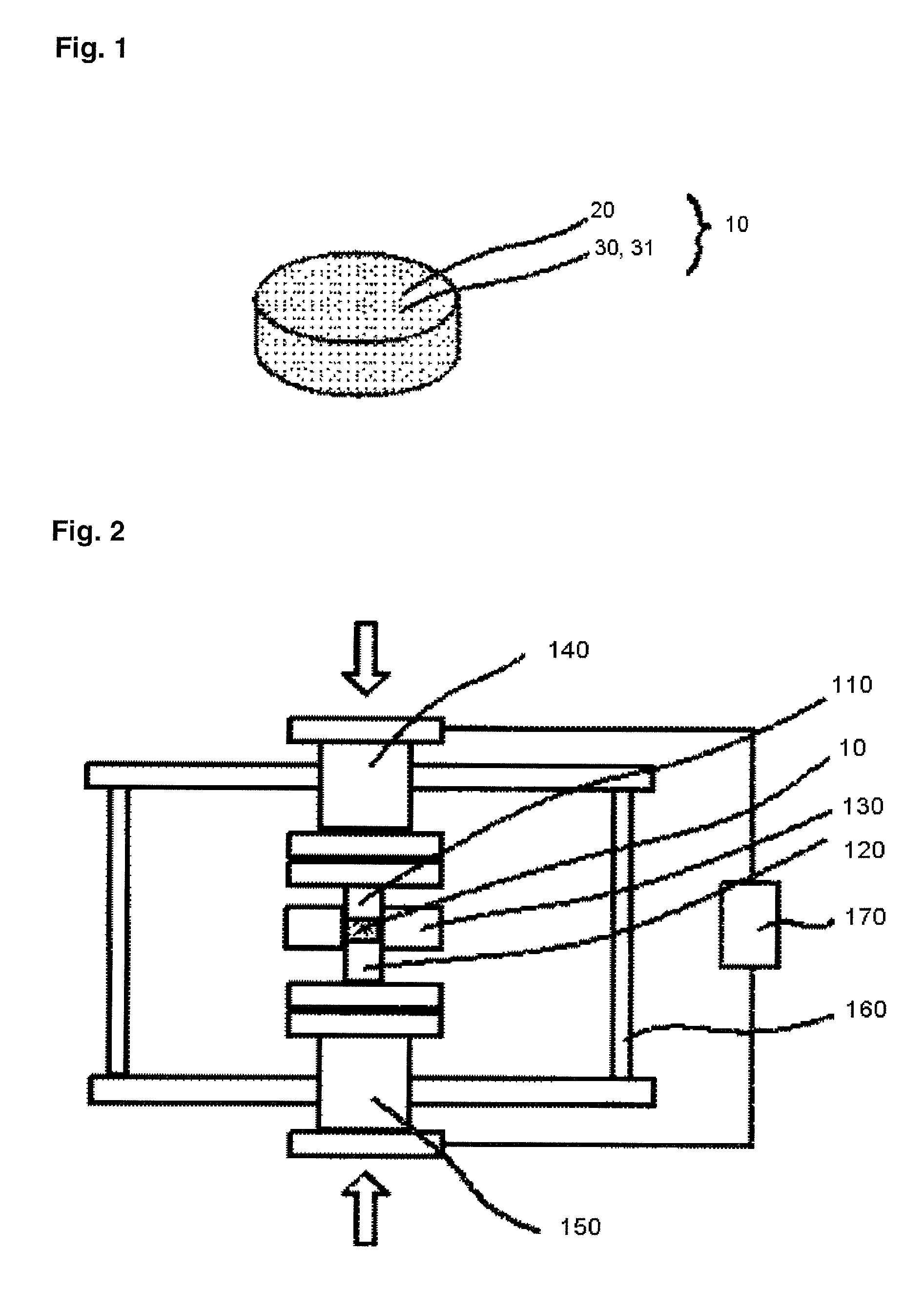Phosphor-containing molded member, method of manufacturing the same, and light emitting device having the same
a technology of phosphor-containing molded parts and light-emitting devices, which is applied in the manufacture of electrode systems, electric discharge tubes/lamps, and discharge tubes luminescent screens. it can solve the problems of low-melting point glass having a poor light extraction efficiency, low-melting point glass being susceptible to heat and humidity, and epoxy resin or silicone resin tending to deteriora
- Summary
- Abstract
- Description
- Claims
- Application Information
AI Technical Summary
Benefits of technology
Problems solved by technology
Method used
Image
Examples
examples 1 to 3
[0071]A phosphor-containing molded member according to Examples 1 to 3 will be described below. FIG. 1 is a schematic perspective view showing the phosphor-containing molded member according to the embodiment of the present invention. FIG. 3 is a schematic illustrated drawing showing a measuring method using an integrating sphere. FIG. 4 is a graph showing measurement results of luminous flux and excitation light output of a phosphor-containing molded member according to Example 2 of the present invention. FIG. 5 is a graph showing measurement results of luminous flux and excitation light output of the phosphor-containing molded member according to Example 2 of the present invention. FIG. 6 is a graph showing an emission spectrum of the phosphor-containing molded member according to Example 2 of the present invention. FIG. 7 is a graph showing an emission spectrum of the phosphor-containing molded member according to Example 2 of the present invention.
[0072]The phosphor-containing m...
example 4
[0082]Y3(Al, Ga)5O12:Ce phosphor is used for the phosphor powder 20. A phosphor-containing molded member is formed in a same manner as in Example 2, except that the raw material mixing ratio (g) of the phosphor powder 20 and the glass powder 31 using borosilicate glass is: (Y3(Al,Ga)5O12:Ce):(borosilicate glass)=15.5:84.5. Yellow emission is observed when an LED having an emission peak wavelength of 455 nm is used to irradiate the phosphor-containing molded member.
example 5
[0083]Three kinds of phosphors: Sr4Al14O25:Eu phosphor, Y3(Al,Ga)5O12:Ce phosphor, and CaSiAlN3:Eu phosphor, are used for the phosphor powder 20. A phosphor-containing molded member is formed in a same manner as in Example 2, except that the raw material mixing ratio (g) of the phosphor powder 20 using Sr4Al14O25:Eu phosphor, Y3(Al,Ga)5O12:Ce phosphor, and CaSiAlN3:Eu phosphor and the glass powder 31 using borosilicate glass is: (Sr4Al14O25:Eu):(Y3(Al,Ga)5O12:Ce):(CaSiAlN3:Eu):(borosilicate glass)=5.5:9.3:9.38:0.62:84.5. Orange emission is observed when an LED having an emission peak wavelength of 455 nm is used to irradiate the phosphor-containing molded member.
PUM
| Property | Measurement | Unit |
|---|---|---|
| glass transition temperature | aaaaa | aaaaa |
| refractive index | aaaaa | aaaaa |
| particle diameter | aaaaa | aaaaa |
Abstract
Description
Claims
Application Information
 Login to View More
Login to View More - R&D
- Intellectual Property
- Life Sciences
- Materials
- Tech Scout
- Unparalleled Data Quality
- Higher Quality Content
- 60% Fewer Hallucinations
Browse by: Latest US Patents, China's latest patents, Technical Efficacy Thesaurus, Application Domain, Technology Topic, Popular Technical Reports.
© 2025 PatSnap. All rights reserved.Legal|Privacy policy|Modern Slavery Act Transparency Statement|Sitemap|About US| Contact US: help@patsnap.com



